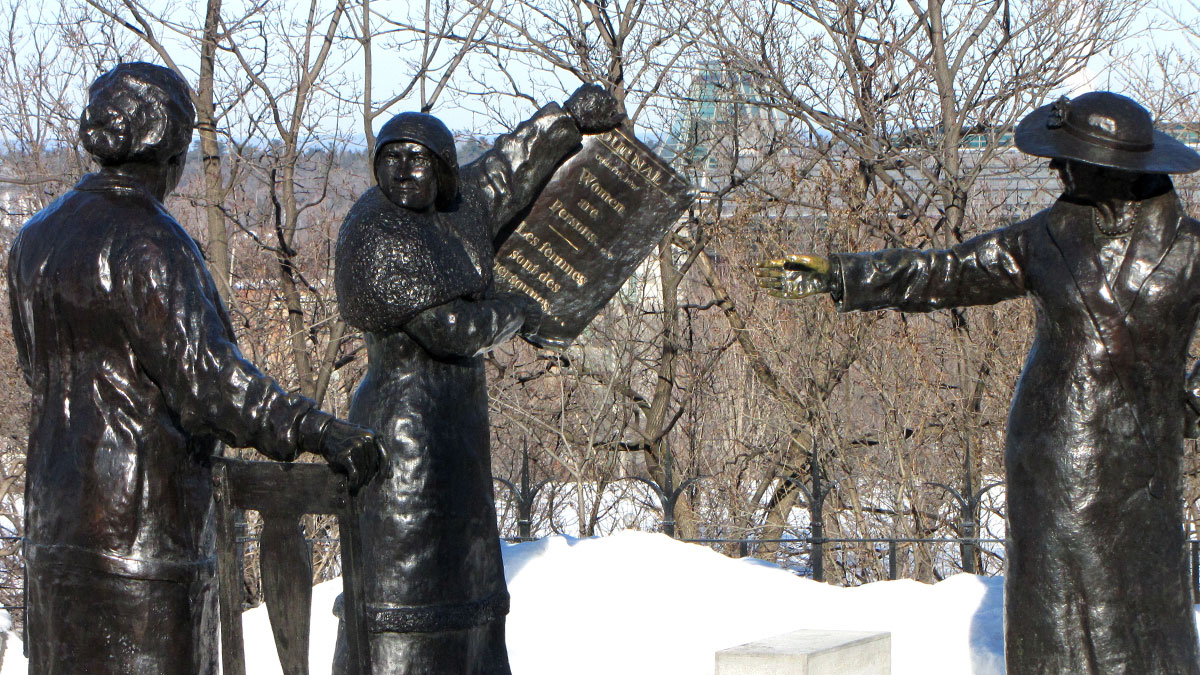 Supplied
SuppliedWanted: a real Canadian heroine (the token women) who epitomizes leadership and success in Canadian history.
On March 8, on a cringeworthy webpage entitled “A Bank NOTE-able Canadian Woman” (get it? because they’re looking for notable women to put on bank notes? HA), the Bank of Canada put out an invitation for the public to nominate “iconic Canadian women,” one of whom will be chosen to feature on a new bank note to be released in 2018.
This project was announced on International Women’s Day by the Minister of Finance and our new Prime Minister, who has so far marketed himself as a champion for women’s rights.
Fueled by the combination of naïve hope, girl power, and celebratory wine that comes with every IWD, I managed to silence the little voice in my head saying “not enough, not enough, not enough” and let my cynical heart do a tiny victory dance. After all, with the exception of the queen, no Canadian woman has ever been on the front of a bank note.
The victory dance was short-lived, however, as I looked at the criteria and some of the nominations that had already been made. The requirements for nominations are that the women must be Canadian citizens who have been dead for at least 25 years, effectively killing my hopes of having Céline Dion money.
When that dream was crushed, I started looking at some of the suggested nominees in online comments section, and I noticed one name that just kept popping up: Nellie McClung, followed by the rest of the Famous Five.
Oh. Hell. No.
If you aren’t aware, our homegrown heroine and her pals were not only instrumental in gaining political equality for Canadian women, but they were also super into eugenics. That’s right — the women who worked so hard to be considered persons under the law also really liked to decide which persons should reproduce.
Nellie McClung, Emily Murphy, and Irene Parlby were all vocal advocates for the implementation of sterilization laws, and in 1928, the Alberta Eugenics Board was created and given power to mandate the sterilization of women deemed “mentally deficit” and liable to produce equally “degenerate” offspring. Between 1929 and 1972, the board was responsible for the sterilization of over 2,800 individuals.
As if it isn’t enough to put her name on parks and schools and library branches, it would be utterly disrespectful to the victims of the Sexual Sterilization Act of Alberta to put Nellie McClung’s picture on a bank note, particularly in light of the recent death of Leilani Muir.
Muir successfully sued the Alberta government in 1995 for wrongful sterilization and has been a very important anti-eugenics activist. Bringing more fame to the women who were partly responsible for robbing her and so many others of their autonomy and dignity would be an insult to her memory.
As much as I would love to see Sir John A. MacDonald booted off my bills, I am not content with replacing horrible men with horrible women in the name of equality.
In 2011, when the Famous Five were taken off the back of the 50 dollar bill and replaced with an icebreaker, I knew I shouldn’t be stoked that someone had decided a boat was more important than women, but I’ll admit, I was a little smug about it.
This time around, the choice is not between women and a boat but between hundreds of cool, smart, iconic, Canadian women that we get to have a hand in choosing. So do some research, make some nominations, and for the love of women, demand better heroines.





“Oh. Hell. No.” Sums up my feelings perfectly
I nominated Agnes MacPhail – the first woman elected to the House of Commons, and the founder of the Elizabeth Fry Society.
as distasteful as eugenics seems now, it was not a rare or heinous thing back then. who should we put on our money if they must also thoroughly mirror the same values we have in 2016? you mention “hundreds of cool, smart, iconic” possibilities. any in particular?